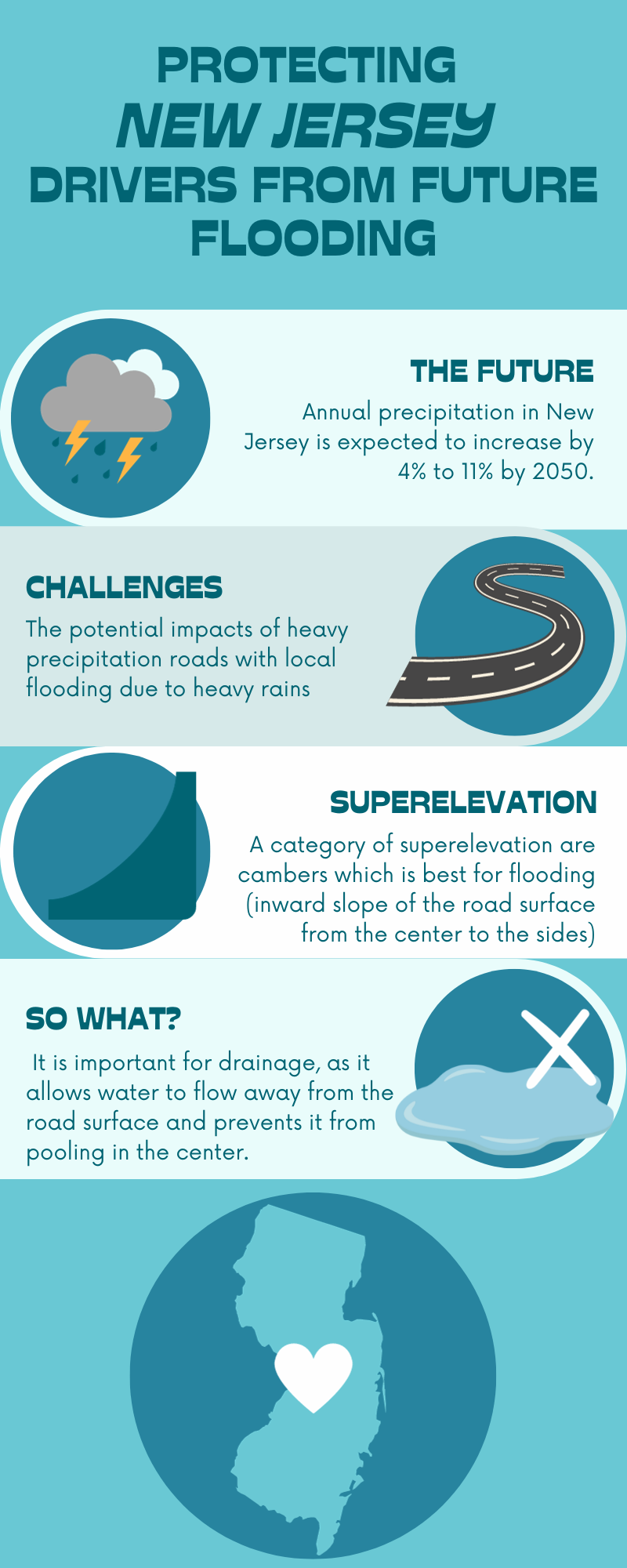Precipitation is anticipated to increase between 4% and 11% by 2050 in New Jersey, facing a heightened risk of local road flooding. To effectively address this risk, the implementation of superelevation on roads is strongly recommended.
Superelevation is important for enabling motorists to navigate curved roads safely and at optimal speeds. Without it, vehicles are at risk of sliding or skidding, particularly in difficult weather conditions such as wet surfaces. A category of superelevation, camber, proves highly effective, especially in addressing small flooding incidents. Camber involves an inward slope of the road surface from the center to the sides.
The primary goal of road camber is to provide a safe and comfortable surface for vehicles, pedestrians, and cyclists. It also plays a crucial role in drainage, allowing water to flow away from the road surface and preventing pooling in the center. Proper road camber not only enhances safety but also contributes to increased tire life by helping tires maintain consistent contact with the road surface, reducing wear and tear.
In conclusion, given the projected rise in precipitation rates, adopting cambered roads emerges as the most optimal solution to prevent potential dangers associated with increased flooding risks.
Contact us
Thank you for your interest in contacting Future Engineers. We look forward to connecting with you!
General Inquiries
support@futureengineers.orgSponsorship Inquiries
sponsor@futureengineers.org
